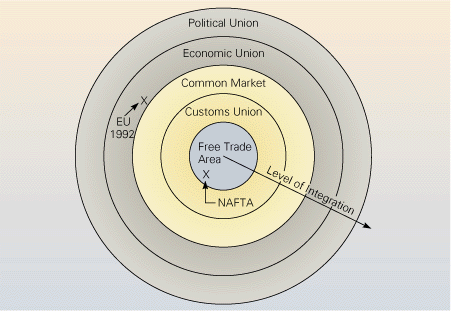Life Cycle Assessment, which is abbreviated as LCA is a tool to assess the impacts caused by the environment and the resources used throughout the life cycle of the product. The life cycle starts from the acquisition of the raw materials, production process, use of the product, and finally its disposal. ISO defines Life Cycle Assessment as a collection and assessment of the efforts, products and the probable ecological impacts of a product system throughout its Lifecycle. Life Cycle Assessment (LCA) is a tool developed to evaluate the products development processes as systems apply to the evaluation and analysis of environmental performance. In 1969, The Coca-Cola Company moved from glass bottles and introduced plastic bottles. They studied the environmental impacts of its packaging forming today’s LCA methodology. Four Stages of Life Cycle Assessment The four phases of LCA include scope definition and goal setting, life cycle inventory analysis, impact assessment Continue reading
Global Business Environment
The international/global business environment can be defined as the environment in different sovereign countries, with factors exogenous to the home environment of the organization, influencing decision-making on resource use and capabilities. The international business environment includes social, political, economic, regulatory, tax, cultural, legal, and technological aspects.
Tips for Effective Management in a Global Enterprise
The most critical issue in the contemporary world is how to manage organizations effectively in the wake of the rapid global changes. In global enterprises, technology is changing at a remarkably fast rate and this trend calls for the management to redesign its organization to remain relevant. Competition is increasing in global enterprises as organizations aim at gaining competitive advantage over others. Different enterprises should change their manner of management in order to respond quickly to global changes. The organization needs to change its processes, structures, systems, and personnel from the inflexible modes to ones that can adapt quickly to global changes. The transformation of the organization is a crucial step to effective management and remaining on the lead in the global world. Effective management in a global enterprise involves the use of new management philosophies. The management philosophies start with the top management in the organization. The managers should apply Continue reading
Regional Economic Integration
Regional Economic Integration means agreements between groups of countries in a geographic region to reduce and ultimately remove tariff and non-tariff barriers for the free flow of goods, services and factors of production between each other. GATT and WTO are the biggest association of more than 140 member countries, which strive to reduce the barriers. However, more than regional, WTO has a global perspective. By entering into regional agreements, groups of countries aim to reduce trade barriers more rapidly than can be achieved under WTO. While there have been decreases in the global barriers to trade and investment, the greatest progress had been made on a regional basis. There are many examples in the current popular push on the European Union (EU) and the effects the EU have on a particular business or industry that illustrates this point. Perhaps the best example of the benefits of economic integration and political Continue reading
Drivers of Globalization
The key factors seem to underlie the trend towards the increasing globalization of markets and production are the decline of barriers to trade and investment and the role of technological changes. 1. Decline of Barriers to Trade and Investment Decline in Trade Barriers Many of the barriers to international trade took the form of high tariffs on imports of manufactured goods. However, this depressed world demand and contributed to the great depression of the 1930’s. After World War II, the industrialized countries of the West started a process of removing barriers to the free flow of goods, services, and capital between nations. Under GATT, over 140 nations negotiated even further to decrease tariffs and made significant progress on a number of non-tariff issues (e.g. intellectual property, trade in services). The most recent round of negotiations known as Uruguay round was competed in December 1993. The Uruguay round further reduced trade Continue reading
Impact of Information Technology on Global Business
Information technology (IT) is probably the force the rampant globalization and economic internationalization. Whereas the world was already destined to becoming a global village even before the eruption of the World Wide Web (WWW) and other digital networks, the Internet has largely facilitated this sojourn and it continues to do so with the new inventions that rock the world each day such as electronic commerce, social networks, and other technological gizmos. Influence of Information Technology on Businesses That Operates in a Global Environment The general answer to this question is that Information technology has revolutionized the operation of businesses in the global environment. Considering that ‘global’ comprises of compounded ‘locals’, perhaps it is prudent to begin this analysis from the minuscule level of local businesses and the effect that information technology has on them. Local businesses are now creating company websites to advertise the services and products that they have Continue reading
Competition Based Market Structures
The competitive structure of a market is defined by the number of competing firms in some segment of an economy and the proportion of the market held by each competitor. Market structure influences pricing strategies and creates barriers to competitors wishing to enter a market. Types of Competition Based Market Structures There are four basic types of competition based market structures. They are pure competition, monopolistic competition, oligopoly, and monopoly. Pure competition exists when there are no barriers to competition. The market consists of many small, competing firms and many buyers. This means that there is a steady supply of the product and a steady for demand for it. There fore, the price cannot be controlled by either the buyers or the sellers. The product itself is homogeneous – that is, one seller’s offering is identical to all others offerings. The markets for basic food commodities, such as rice and Continue reading

